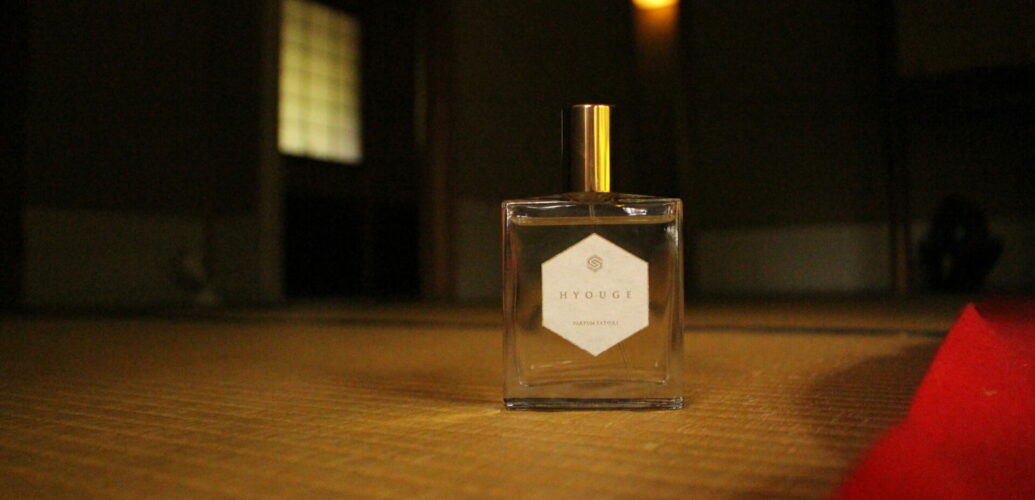Attraction of Matcha Perfume
This perfume is a fragrance that expresses the very atmosphere and culture felt in a tea ceremony room, which I have been familiar with ever since I can remember. Nowadays, “Japanese green tea” has become a standard drink even overseas, but for me, tea means “a cup of Matcha tea in a tea ceremony room. The taste of Matcha tea, the aroma of tatami mats, the sound of boiling water in the silence, the hint of light. I created a perfume of the sensibility that wafts through in a small space.
Furuta Oribe(古田織部) was a tea master of the 16th century and one of Sen no Rikyu’s most famous apprentices. He inherited the tea ceremony of Sen no Rikyu, but faithfully carried out his teaching of “do something different. With his bold and free spirit, he created a new value of beauty in the world of tea.
This led to the “Oribe taste,” a major trend in garden design, architecture, pottery, and other aspects of the time. However, despite being designed 400 years ago, the typical dark green and black pottery is still modern today.
The tea master Sotan Kamiya, a wealthy merchant in Hakata, who lived at the same time as Oribe Furuta, also praised the novelty of Oribe ware. In his tea ceremony diary, “Sotan Nikki (Sotan Diary),” he wrote, “Seto chawan hitsumi-shouya. Heukemono (hyoge mono).
Of the two, “hyoge-mono” also refers to Oribe himself, whose alias is now well known. The name of the perfume “HYOUGE” is taken from this real name.
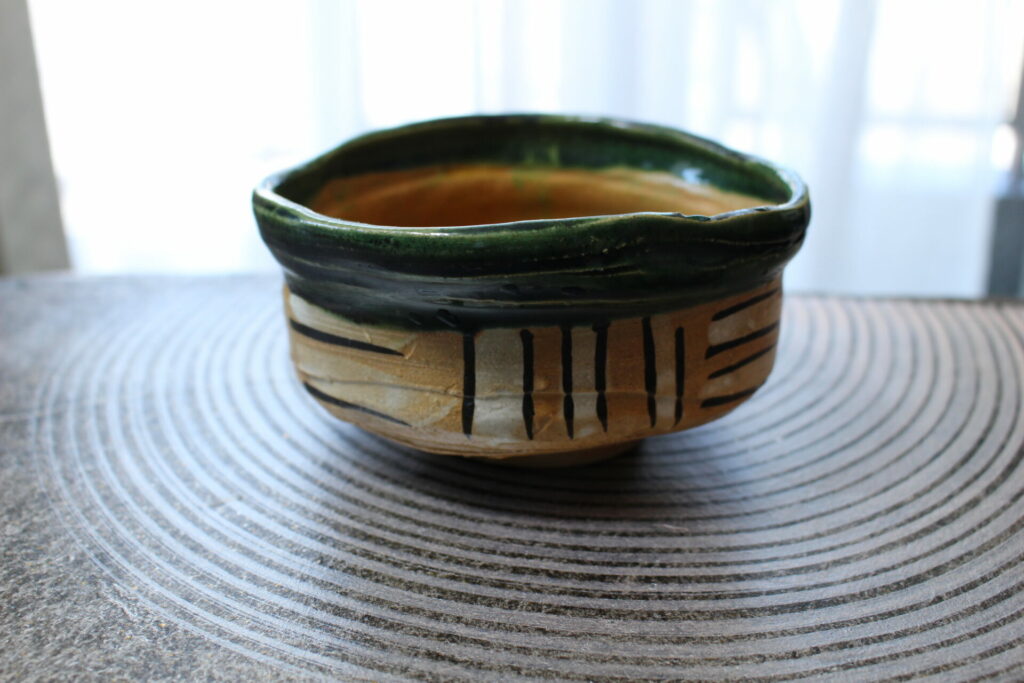
The Idea
In Japan, green tea in PET bottles was launched in 1992 and grew rapidly until around 2004 because it was easier to drink than leaf tea made in a teapot. At the time, the emphasis was more on drinkability and mildness.
Since that time, I have had a budding desire to try to create an aroma that expresses the astringency, bitterness, and umami of Japanese tea, rather than the sweetness. In particular, the perfume of “matcha,” powdered tea leaves ground into a powder.
In addition, I wanted to express even the creamy foam on the surface of the tea when the tea is prepared.
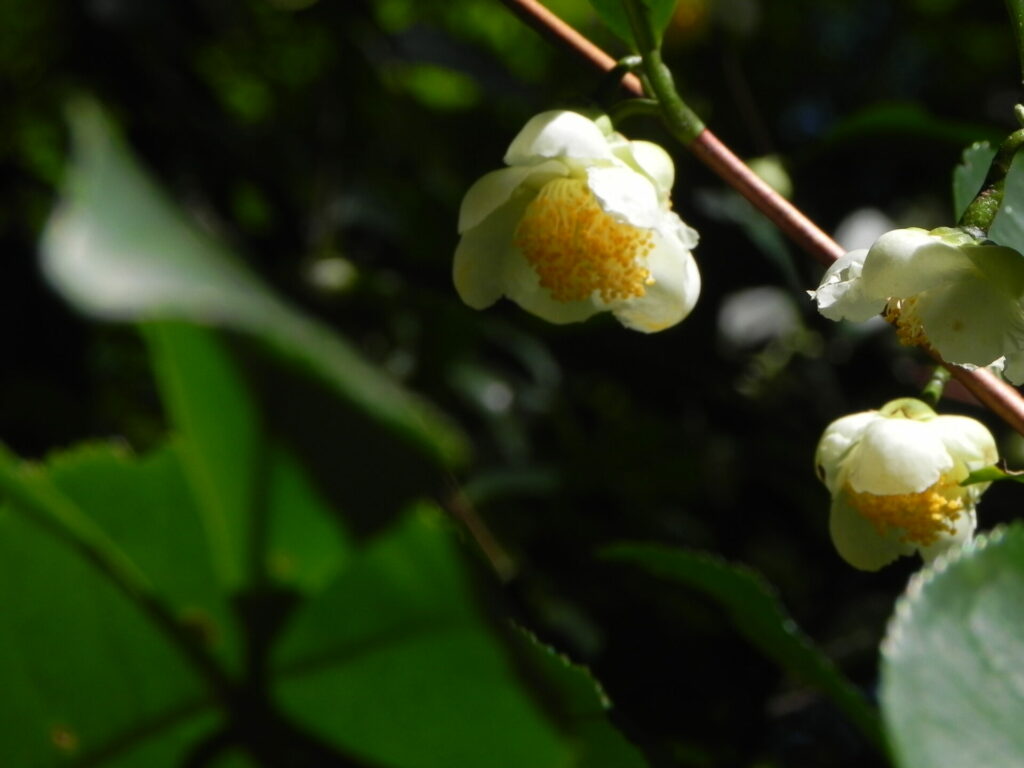
Fragrance of HYOUGE
HYOUGE is slightly bitter, with a hint of cis-Jasmon. This is a single perfume that goes into the jasmine note, but it is astringent and bitter. Then we add a little violet leaf as a “flavor”. Violet leaf is said to have a cucumber-like aroma, but it has the smell of dried food, for example, kombu dashi (kelp soup stock).
Furthermore, the clean green alone is a bit lacking in fullness, so we added florals to give it a sense of body.
In fact, “tea tree,” “sasanqua,” and “camellia” are members of the same camellia family. The sasanqua blooms in late fall, while the camellia blooms through spring. And tea flowers bloom in December, and are dainty little white camellia-like flowers.
The tea flowers are fragrant, with a scent similar to that of the sasanqua, a raw ingredient called Hedion. Hedion, on the other hand, is a common element in the scent of jasmine. Therefore, we thought that “tea note” and “jasmine” fragrances would be a good match.
Therefore,I added natural jasmine abs. to the formula to give it a floral volume. We also added iris butter for the lather and powdery feel when making usucha (thin tea). Various other natural flavorings were also added to give complexity to the green type, which tends to be monotonous.
Green tea, especially matcha, has a balance of freshness, bitterness, and flavor, which is its richness.
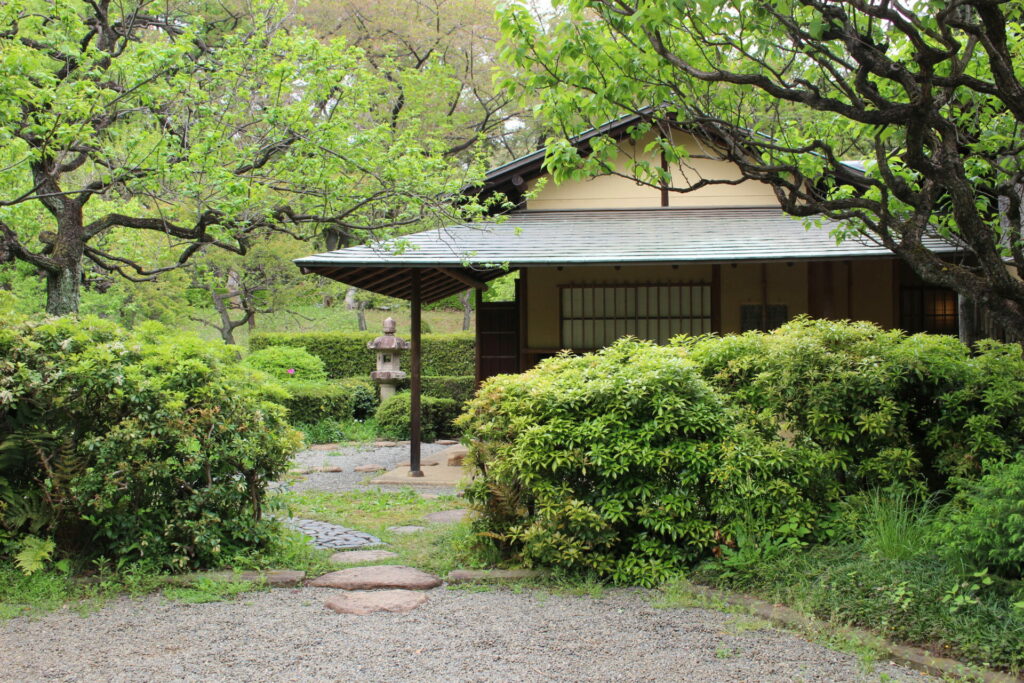
The Perfume World of Satori
Satori” is the signature fragrance of Parfum Satori In this fragrance, I wanted to express not only the reproduction of agarwood, but also “the clean space of a Japanese-style room and the appearance of the people who enter it.
And similarly, we wanted to make the scent of “-HYOUGE” a true Japanese tea fragrance, different from green tea that is just refreshing. Furthermore, I wanted to capture the spirit of the people who serve and serve tea.
The Green Tea Type Trend and Its Influence
Since Van Vere (Pierre Balmain) was launched in 1946, the green type has continued to this day, with an emphasis on green and a swing toward floral and citrus.
In this context, perfumes with green tea notes are said to have started around 1990, and Elizabeth Arden’s “Green Tea” in 1999 attracted attention as a new green type with a green tea scent theme. However, its fragrance is appropriate to use the katakana “green tea,” and its scent is refreshing and clear. From my perspective as a Japanese person, I felt it was rather similar to lemon tea.
Subsequently, perfumes claiming to be green tea continued to be a hit. Of course, green tea does not necessarily equal Japanese tea. Chinese green tea is light yellow in color and has little bitterness. (China has green tea, white tea, black tea, black tea, and blue tea.)
Thirty years ago, the tea served in French households as “green tea” was similar to Chinese green tea and different from the fresh green color and aroma that Japanese people were used to.
On the contrary, when I served matcha to foreigners who came to Japan, it was not popular at that time because it was “too bitter” and they asked for sugar.
I was also surprised to hear a French person say, “I thought it was colored” because matcha was so beautifully green.
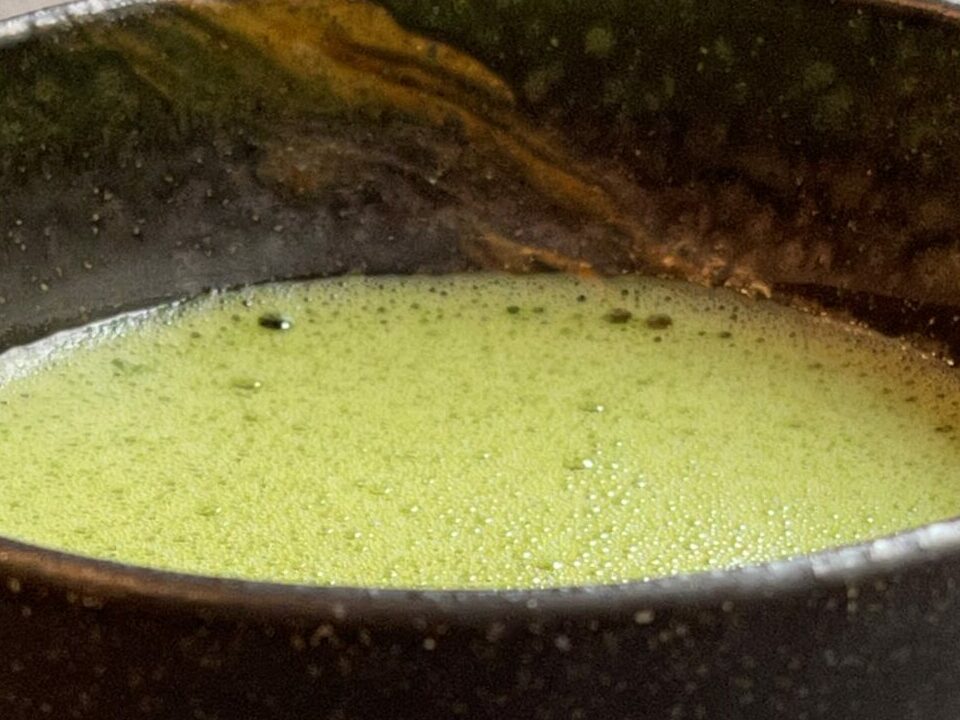
Finally.
Matcha Perfume “Hyouge” reflects the culture of Japanese tea and its aroma while inheriting the spirit of Furuta Oribe. It is deep and complex, yet has a perfect balance of freshness, bitterness, and flavor. You can enjoy the spirit of the tea ceremony and its aesthetic sense with its fragrance.HYOUGE is recommended for all those interested in Japanese culture. It is also highly acclaimed overseas.
HYOUGE’s Recognition
Hyouge(旧:織部) received a prestigious 4-star rating in Perfumes: The Guide III, written by the renowned fragrance critic Luca Turin, often referred to as the “Emperor of Scent.” This high praise reflects the quality and allure of the fragrance.
PERFUME -HYOUGE-


